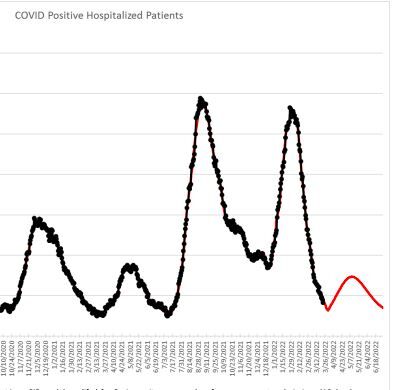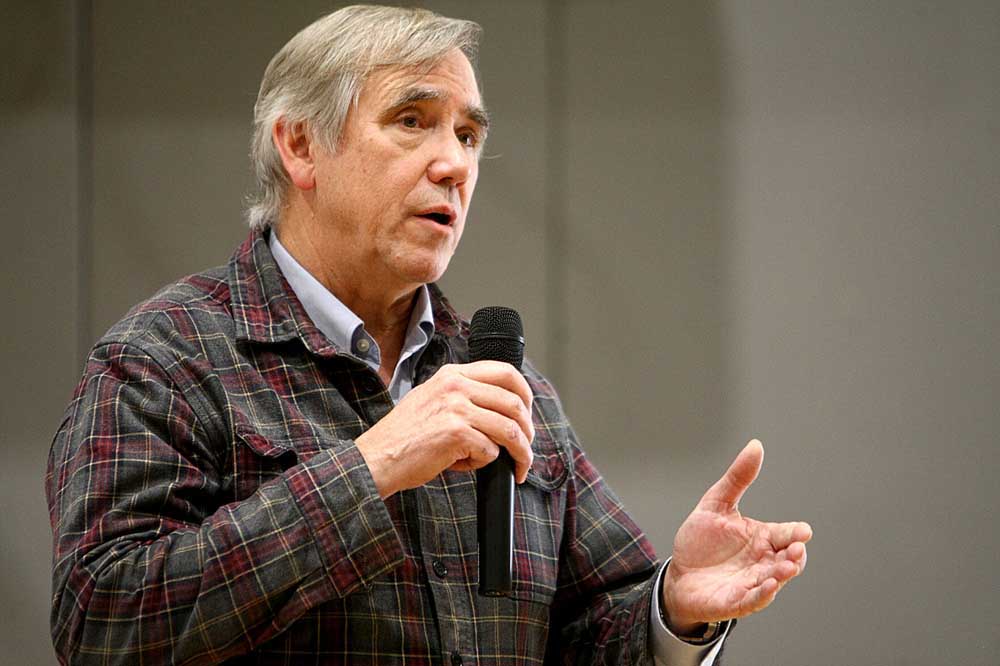COVID-19: Limits end, boosters arrive and new variant concerns
Published 8:00 pm Wednesday, March 30, 2022

- Oregon's State of Emergency will be lifted April 1.
Oregon is taking several steps to dismantle the state of emergency in the state since March 2020, even as the fastest spreading version of COVID-19 now accounts for over half of all new cases in the United States.
The moves come as hospitalizations for COVID-19 in Oregon are close to falling under 100 per day, down from nearly 1,200 in January. Schools have managed to remain open even with positive cases reported throughout the state. A mass vaccination site in Portland closed permanently and others around the state are reducing hours or making plans to end in the near future.
Trending
Republicans have lashed out at Gov. Kate Brown throughout the pandemic for what they saw as political overreach and overreaction. But Brown’s supporters note that over the past two years, Oregon has the second-lowest per capita rate of infections in the nation — trailing only Hawaii. It’s 7th in per capita deaths. All while ranking just 16th in vaccination rates, at 68% of all residents.
Oregon Health Authority’s weekly report, released Wednesday, showed most numbers heading in the right direction. Cases for the week ending on Sunday, March 27, were down 21% from the week before and were down an astonishingly steep and fast 98% from the omicron variant’s peak in mid-January. There were 104 people with COVID-19 in hospitals, down from nearly 1,200 per day during the January peak. Only 15 COVID-19 patients were in intensive care units, the lowest number since April 2020 at the beginning of the pandemic.
The future numbers were trending good as well. OHA said just 2.7% of new COVID-19 tests were coming back positive — far below the more than 20% rate in some Oregon counties just after New Year’s Day. More importantly, the test rate was significantly under the 5% rate that health officials throughout the pandemic have said is the point at which infections are spreading out of control.
Among the actions in Oregon this week:
- The state of emergency declared by Brown in March 2020 and extended several times over the past 24 months will finally be allowed to lapse on Friday.
- Local governments will have more authority over COVID-19 responses. Under the order, Brown had sweeping authority during the pandemic, ordering businesses to shut down, mandating distance learning for students from kindergarten to graduate school, events to cancel, and rules for wearing masks.
- Oregon National Guard units that were sent to hospitals around the state to provide logistics and staff support are being sent home.
- The Oregon Health & Science University has reduced its forecast of the trajectory of COVID-19 from weekly to once every other week. The next forecast on April 6.
The Oregon Health Authority on Monday will end its daily report of cases, hospitalizations and deaths. The statistics will still be updated on OHA’s website for pandemic information.
“The shift in reporting will better capture trends over time as Oregon moves into the next phase of the pandemic,” the OHA announcement said.
Trending
Oregon is following national and international moves, ratcheting back on the size of orders for more vaccines and personal protective gear. The U.S. is lifting restrictions on vacation cruises while airlines lobby for an end to a requirement that passengers wear masks while aboard flights.
Earlier this month, the nation found itself at one of the least impacted periods of the pandemic. Many of the moves to loosen restrictions were announced with the view that the worst was over.
But a new wave of the BA2 omicron subvariant — twice as contagious as the already hyper-spreading first omicron variant — has boomed throughout the world, with 18 European countries, including the United Kingdom and Germany, reporting new infections were again on the rise.
In the United States, BA2 now accounts for more than half of all new infections and is expected to eventually become the single strain of new infections, just as delta and the original omicron had crowded out other variants in earlier waves. On the day he received his second booster shot, President Joe Biden called on Congress to approve the $15.6 billion in funding — a price tag that has many Republicans balking at another round of pandemic aid. The GOP wants any new spending to come out of the budget of other domestic programs.
Despite policy changes to loosen restrictions on travel, Biden said the pandemic was still a threat to the national health and economy.
“This isn’t partisan — it’s medicine,” Biden said. “Americans are back to living their lives again. We can’t surrender that now. Congress, please act.”
The rapid spread of BA2 was underscored by the fast-lane approval of another round of boosters for older Americans. It also approves another shot for people over age 12 who have compromised immune systems.
The Food and Drug Administration and Centers for Disease Control on Tuesday rapidly approved a recommendation for a second booster of Pfizer or Moderna vaccine, citing studies that protection from the vaccines waned as soon as four months after the previous booster last fall.
The Western States Scientific Safety Work Group, a panel created by California, Oregon, Washington and Nevada to review federal recommendations unanimously endorsed the plan on Tuesday. Many supermarket pharmacies and other sites in Oregon were already taking appointments Wednesday.
Rudy Owens, an OHA spokesman, said in a statement that supplies of vaccine were ready to go into arms as soon as possible.
“About 270,000 doses of Pfizer and Moderna are distributed throughout the state, which should easily meet any surge in demand,” Owens said.
Most Americans who have followed the recommendations will now be getting their fourth dose with projections that it won’t be the last.
The longtime goal of eradicating COVID-19 has given way to medical and political realities that the epidemic turned pandemic would now be “endemic” — sticking around life for months and years to come in a medically damaging, but less deadly form.
On Feb. 24, when Brown announced the April 1 end of the emergency order, she said that public health struggles hadn’t come to an end. Six waves over two years had made for a new reality of daily life.
“Lifting Oregon’s COVID-19 emergency declaration today does not mean that the pandemic is over, or that COVID-19 is no longer a significant concern,” Brown said in February.
Just as new variants changed, so did the response to them.
“We learn to live with this virus,” Brown said, adding “We must continue to get vaccinated and boosted, wear masks when necessary, and stay home when sick. That is the only way we can achieve our shared goals of saving lives and keeping our schools, businesses, and communities open.”
Pessimists have pointed to the irony that the emergency orders end on April 1 — “April Fool’s Day.” It’s just a bureaucratic coincidence, but the irony of the timing is a reminder that each declining wave had brought hopes that the worst was over.
A worst-case scenario would be a repeat of the end of June 2021. With falling infection numbers, Biden wished out loud for a near-normal Fourth of July. Brown held an event in Portland to signal enough people had become vaccinated to believe that the virus was under control. While she would renew the emergency order, many of the strongest limits were not invoked, leaving local officials and hospitals to deal with future surges.
The wait wasn’t long.
By July 1, the virulent delta variant plowed through the country, with Oregon experiencing its highest number of COVID-19 deaths of the entire pandemic in September. OHSU’s forecasts in the early fall said hospitalization rates might return to pre-spike levels by Christmas. But as delta fell, omicron rose — faster but less virulent than delta. It set new daily case records before peaking in January.
Now comes the BA2 variant.
Health officials are watching the BA2 variant and are aware that with 1.5 million new cases around the world each day. Large swaths of the planet still waiting for vaccines to arrive. Odds are that a new variant that is both highly contagious and virulent would be next to impossible to contain once it starts to spread.
The Institute for Health Metrics and Evaluation at the University of Washington came out with a new forecast covering the period through July 1.
It expects that at the end of the timeframe, COVID-19 will have killed just under 7.4 million worldwide from Covid-19, including just under 984,000 in the United States. Deaths in Oregon will pass 7,500.





